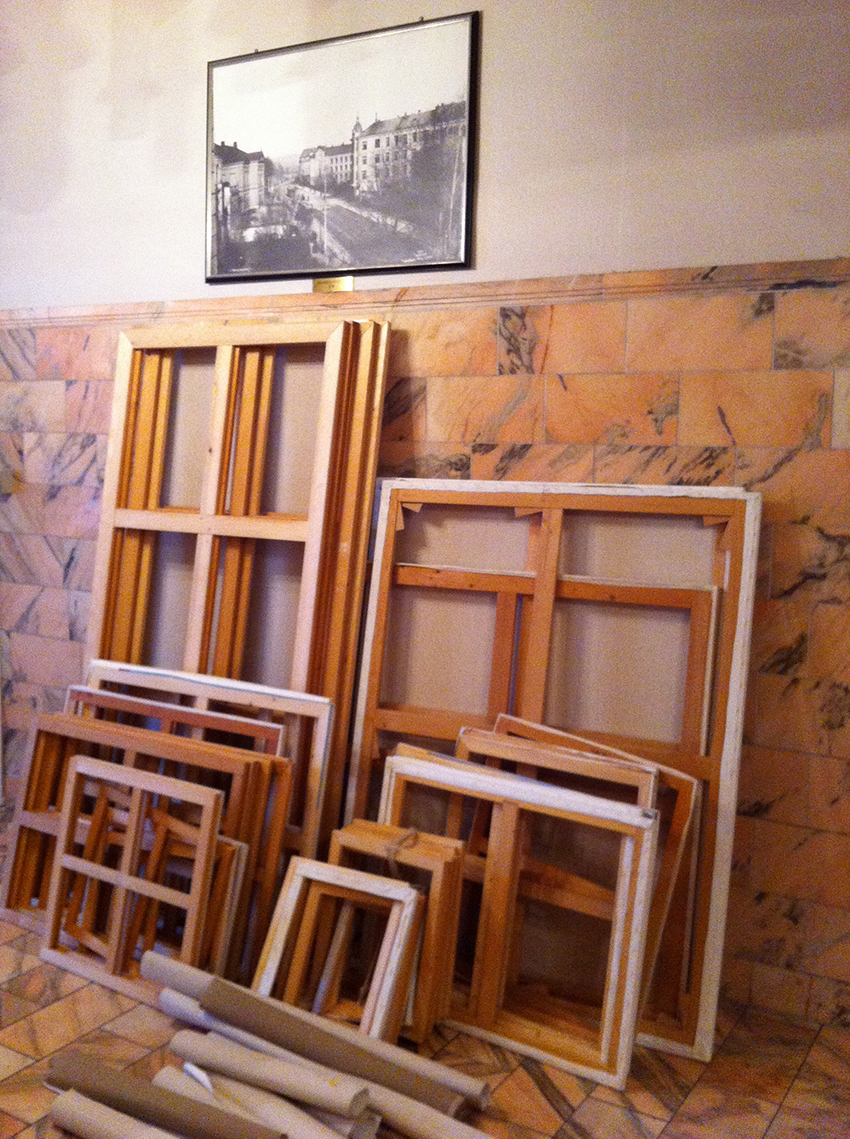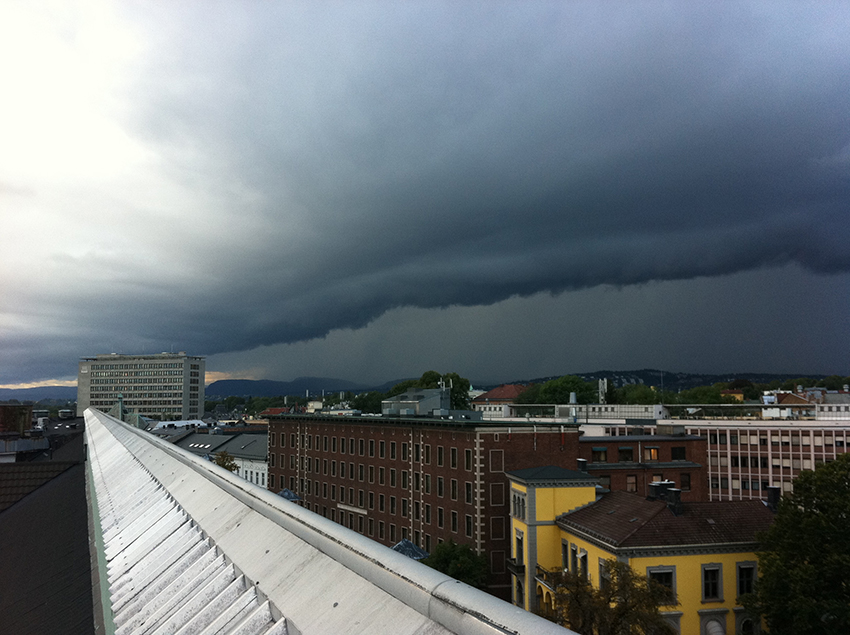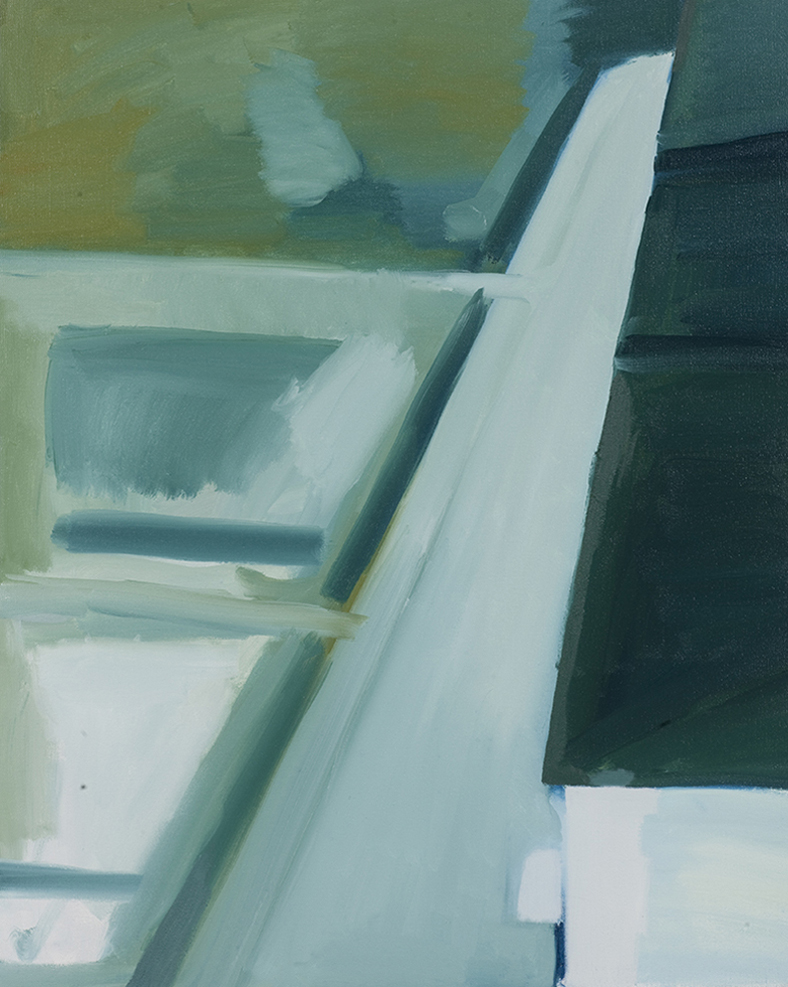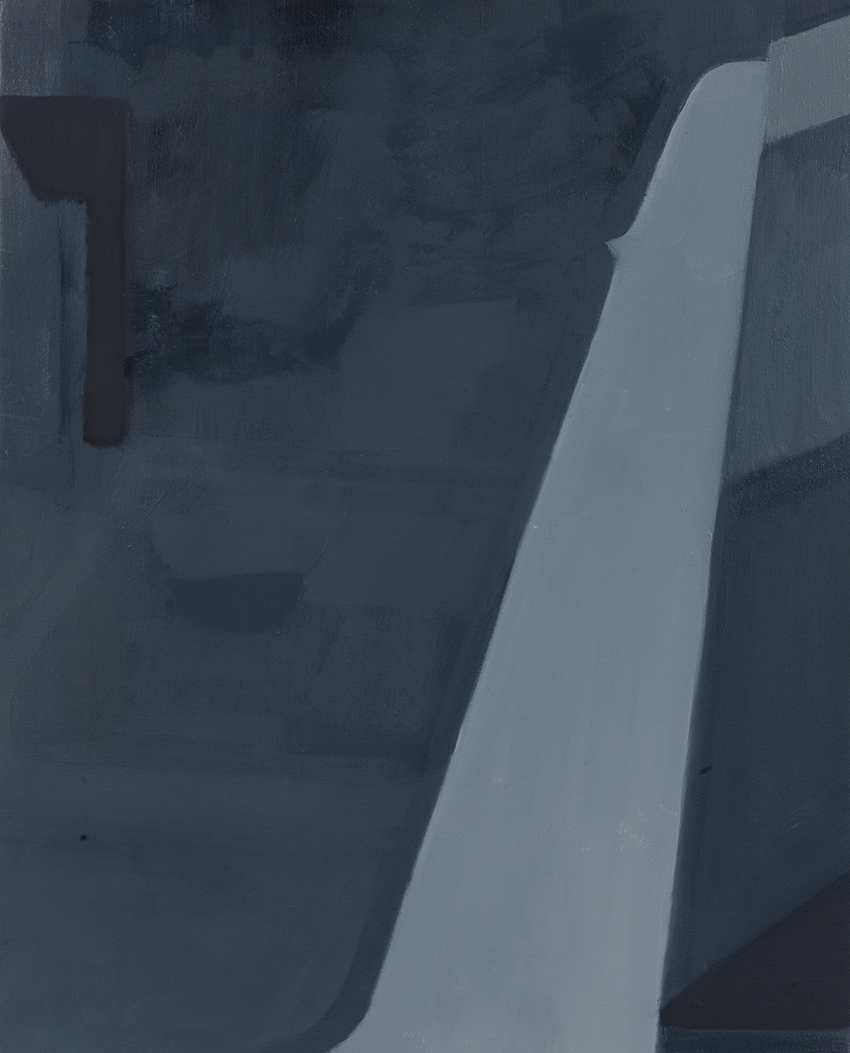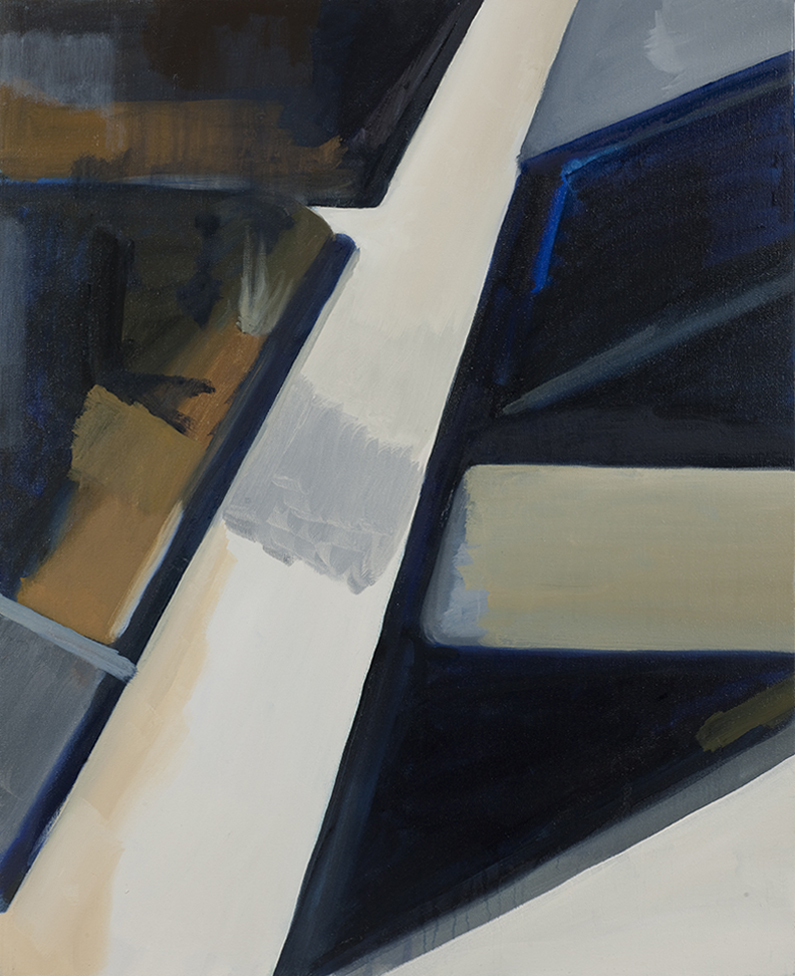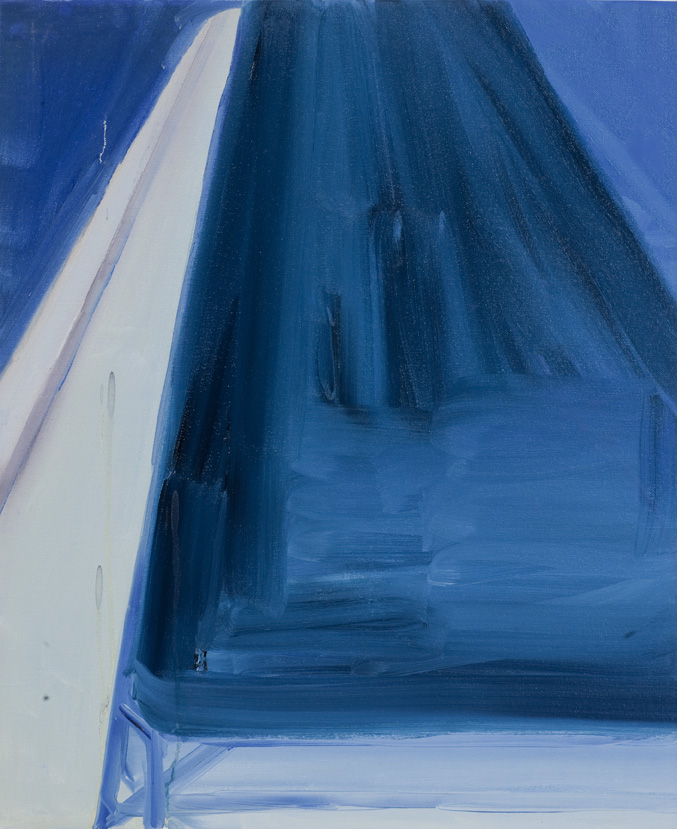Oslo
In the fall of 2011 I returned to my studio in Oslo. Until then, I had used the studio primarily as a place of reflection; to collect and archive work from previous travels that could be used as source material for new paintings. I saw that the work done in the field often influenced new work, which eventually also led me to rework motifs in the studio that I had been working out on site.
For instance, in the painting Yellow Mountain I revisited Kolsås. The painting is a much larger format than the paintings made on the mountain. Much of the detail from the original work became simplified through this process of remaking it. A strong cadmium yellow dominates the picture. The mountain is outlined in red, while patches of white indicate snow which offers an airy yet formal of presence. Some of the gestural marks that were important for the paintings on site at Kolsås are still retained.
A human surveillance camera
After working in Winterstudio, it seemed less interesting to me to work out new paintings only pertaining to other places. I had recently learned from the newspapers that the office at the end of my hallway was being used by associates of the Norwegian police to observe people entering and exiting the US embassy across the street. In January 2012 I received a notice that the studios in Handelsbygningen were sold and that the premises had to be vacated by the end of March. Inspired by my colleague police officers down the hall, I began painting the view from my studio window. The time constraint felt frustrating, but made it comparable to the situations I had experienced at Høvikodden and Jeløya.
Room 611 in Handelsbygningen overlooks Inkognitogaten. The view from the studio consists of the street framed by buildings on the right, trees and driveways on the left, ending with a bend where the street turns the corner of the next block. The combination of this bird’s eye view and the continual simplification taking place made the paintings look like the wing of a plane, as if the paintings, like the room, were still and in motion at the same time. This is similar to the feeling you get when you look up through the skylight and watch the clouds drift. This sensation of travel probably contributed to my thinking about moving the studio itself in the first place. That the movement was now reenacted in the paintings themselves in Oslo created another dimension to the work. In the city staring out the window I had become a human surveillance camera tracking the movements on the street below.
The new paintings in the studio were made on canvas rather than board, which corresponded well to the white plaster walls of my new location. I had bought stretchers from a deceased painter; they came in traditional fixed sizes such as marine, landscape, portrait, etc. In the painting American Embassy two of the largest sizes are used. As I could not see the building from my studio, the painting is based on an imagined view. Lines in charcoal and black paint indicate its form. Most of the primed canvas is left untouched.
The Inkognitogaten paintings
Inkognitogaten, in English the incognito street, is not a very busy throughway. The tram passes on regular intervals, some people use the sidewalks and occasionally a car passes through or a truck delivers goods to businesses in the local area. I liked the way the name of the street corresponded to the anonymous look of it when empty. In the late evening and early morning I had the street to myself; I could concentrate on its formal aspects and return to the same type of compositions, gradually simplifying the motif, alternating between thin washes and impasto techniques to produce a surface that had movement to it. Thick paint brushed aside in fast strokes, like the street being reclaimed by the tram and passing cars after snowfall. With the two studio windows acting as eyes, moving about in the room felt like being inside someone’s brain. Slight changes in perspective from canvas to canvas reflected my movement in the room; looking out the left window, looking out the right window. This stereoscopic way of working did not produce depth of field in the picture. Instead the painting gradually got flatter and reduced to only a few mono colored surfaces; a palette of blues and yellows, purples and browns, the movement from winter to spring, the color of snow in sunlight and under street lamps at night.
